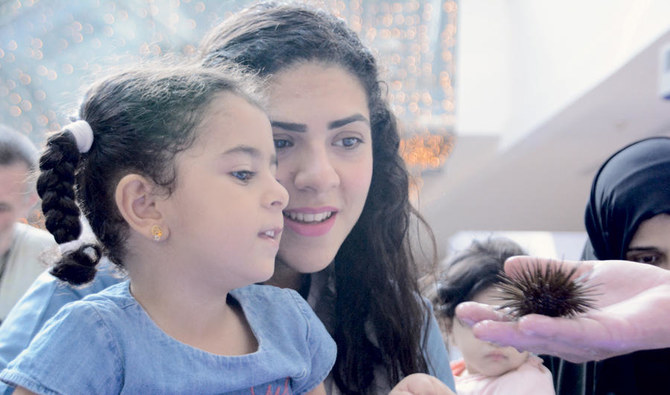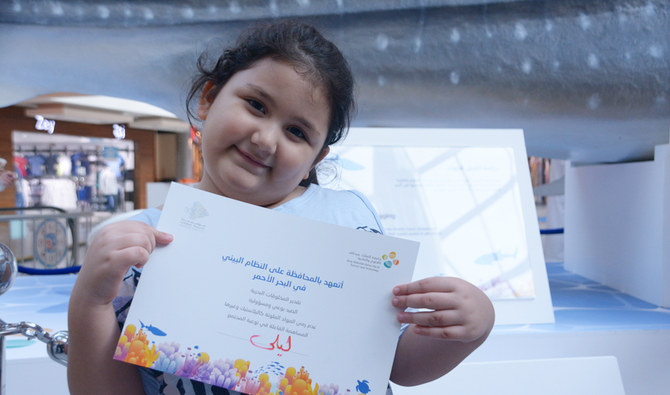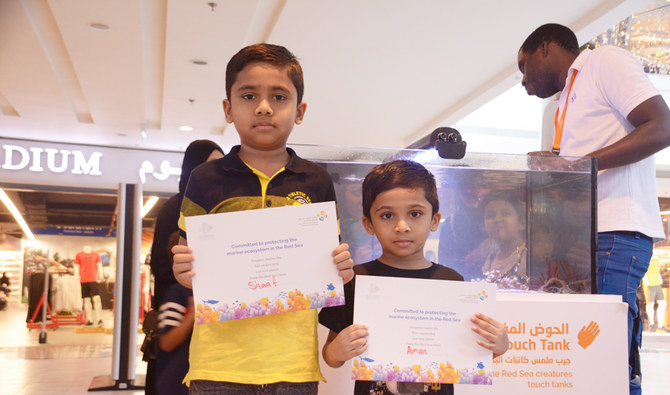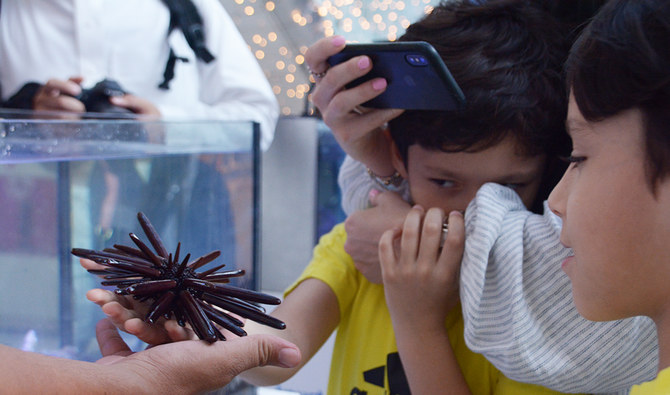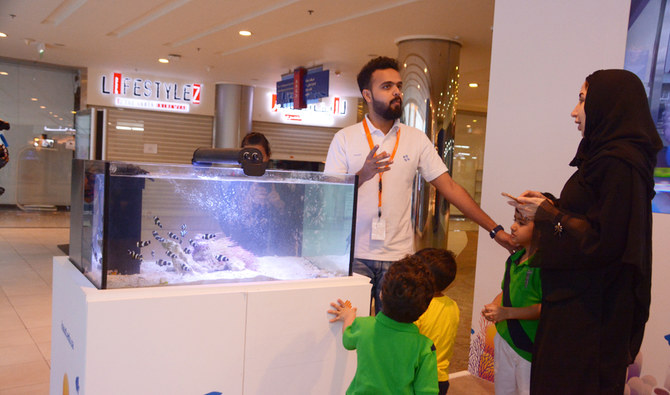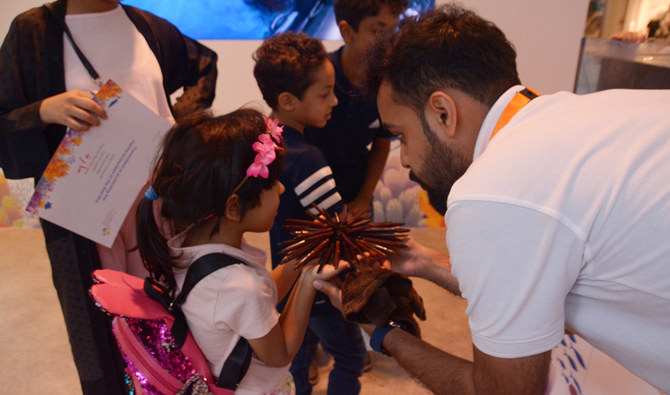JEDDAH: Visitors were plunged into the fascinating underwater world of the Red Sea at an awareness exhibition aimed at helping to protect the unique marine environment.
The Red Sea Research Center, based at King Abdullah University of Science and Technology (KAUST), has been staging an interactive display at the Red Sea Mall in Jeddah to highlight the importance of the marine ecosystem to the entire region.
The exhibition, which runs until June 24 and is part of the 41-day Jeddah Season summer festival, is designed to raise awareness of Red Sea conservation projects.
KAUST scientists and researchers were on hand to guide adults and children through the exhibition and introduce them to the Red Sea’s vast array of wildlife.
Children had the chance to feel and hold sea creatures in special tanks and were asked to sign a pledge to contribute to the preservation of the Red Sea by helping prevent pollution of the marine environment.
Micheal Berumen, director of the Red Sea Research Center, told Arab News of its mission to educate not only KAUST students, but also the public.
“The Red Sea is a resource that needs to be protected, appreciated, and celebrated by everybody living by the coast.
“It has a big impact to see a model of a whale shark, and it has a big impact to see creatures in the tank, but it is another level when you actually get to hold it,” said Berumen.
“And if you watch, it is actually the kids who are most excited about the exhibit.”
Berumen added that by targeting children, the center aimed to get them passionate about nature and hopefully spawn the marine biologists of the future.
“We really want to be sure that the people here understand how special the Red Sea is, and the unique resources we have right in our backyard.”
Whale shark
A life-size model of a whale shark, situated at the entrance to the exhibition, represented one of the most important creatures living in the Red Sea, said Berumen. “There are very few places in the world where you can study whale sharks, but the Red Sea is one of them.”
Burton Jones, a professor of marine science and a member of the Red Sea Research Center, said that as researchers they were trying to work out how the Red Sea worked while helping people to “understand that the Red Sea is extremely important for everybody’s life here.”
He added: “The Red Sea is what makes life better in Jeddah. It helps to keep the climate cooler, and oceans are very important to the climate of an area.”
Lina Eyouni, a Ph.D. student at KAUST, said the exhibition aimed to create a relationship between the visitors and the creatures of the sea. “We want to keep people engaged in what we are doing and spread knowledge about the importance of the environment and how can we protect it.”
Pollution threats
Sea pollution is mainly caused by coastal farming, rivers, sewage, and litter.
Fertilizers used in farming often get washed into the sea by rain, and although this is not a serious problem in the Red Sea, sewage and littering are major pollution threats, Berumen said.
The Red Sea Research Center has previously run several public events in Riyadh and Jeddah, but its latest exhibition is the biggest to date.
It has been a key department since the opening of KAUST in 2009 and is well-positioned and superbly equipped to study the Red Sea with its state-of-the-art facilities and world-class researchers.
The center also works closely with many government agencies to maintain the health of the Red Sea’s marine environment.



